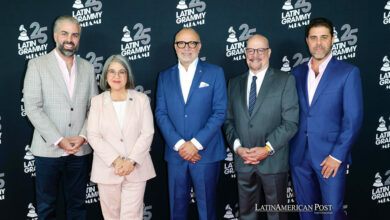Table tennis: Why is the gap between Asian and Latino players so big?
"The emergence of Latin American table tennis is evident and in recent times it has been marked by the export of athletes": Venezuelan coach Alejandro Rojas

If there is a nation that has been able to how to establish its hegemony over a sports discipline, that is China with table tennis. For many, this is the most practiced sport in the world and, according to NASA, is the most difficult to execute. This is a sport that is slowly emerging and is being viewed with more professionalism in Latin America. Precisely for Alejandro Rojas, coach of Venezuela's National Table Tennis Team, and who these days is with his runners in dispute of the Central American and Caribbean Games, table tennis in Latin America has grown greatly in the last years and is seen with much more seriousness by the leadership.
Leer en español: Tenis de mesa: ¿Por qué es tan grande la brecha entre los jugadores asiáticos y los latinos?
"The emergence of Latin American table tennis is evident and in recent times has been marked by the export of athletes. The best of our representatives compete in super division or division of honor in Asia and Europe, and that leads them to greatly increase their level and gather experience and then move it to our countries," he explained in an interview with LatinAmerican Post.
However, why is the gap between the representatives of Asian countries, especially China, and Latin Americans so big? Above all, what is coming for our athletes in this Olympic cycle that is on its way to Tokyo 2020?
Why the Asian hegemony in the discipline?
It is no secret to anyone that the supremacy of Asian table tennis, and especially that of China, is absolute. Just look at the results in the Olympic Games. According to the official website of the International Table Tennis Federation, of the 6 gold medals available in Rio de Janeiro 2016, London 2012 and Beijing 2008, the People's Republic kept all the medals that were handed out. Even in the general medals of the discipline in the Olympics, the gap between China and South Korea, second in the board, is 25 gold medals. However, never a representative of the American continent has added an Olympic medal in the history, which goes back to Seoul 1988, according to the aforementioned portal.
This domain, according to the Venezuelan coach, is due to things that are very easy to understand, but that can only be obtained by developing jointly, systematically and prolonged. "The truth is that the structure of Asian table tennis is very strong. The quality and mass of its athletes, the support of the leadership to the discipline, the training of the coaches and even the implementation of the science and technology adapted to the sport, are aspects that work them like a little clock in a geared way and that finally lead them to have the success they have, "he explains.
You can also read: Exclusive interview with Eligio Vento: A look at the life of a Paralympic athlete
The gap can be shortened
It is clear that ending this whole structure of Chinese table tennis of which Alejandro talks is not easy. However, there are some details with which that domain has been somewhat offset. "There are specific blows like the backhand and the backhand down the line, in addition to the services of ours, which have generated a shortening of that gap and counteract their game. But, actually, it's still very difficult to beat them. It's like in athletics in Jamaica or in basketball in the United States, even though they have more possibilities, it's the Asians who impose themselves, who are the ones to win."
Latinos with the possibility of competing with Asians
Although it is possible that Asian supremacy within the discipline is not overthrown in a long time, there are two Latin American representatives who have known how to put their names on the map. In addition, these are personalities that have the possibility to position themselves in the medals table of the Tokyo 2020 Olympics. They are the Puerto Rican Adriana Díaz and the Brazilian Hugo Calderano.
"In the case of Adriana, who has had a lot of international growth and especially communication, I think she still needs to be at the top and look for a medal in Tokyo, but I talked with her father who is his coach here in Central America and he told me that they have a training plan to go for a medal, we'll have to wait and see what happens," Rojas said and then added: "On the side of Hugo Calderano, I do see him with a lot of possibilities. He is currently eighth in the world ranking and in that position he has many opportunities to fight for the glory. In addition, the Brazilian Table Tennis Federation considered that as a goal and will offer all its support to break with the myth that Latin Americans cannot add metals in the great event of Olympism."
LatinAmerican Post | Freddy González
Translated from "Tenis de mesa: ¿Por qué es tan grande la brecha entre los jugadores asiáticos y los latinos?"





